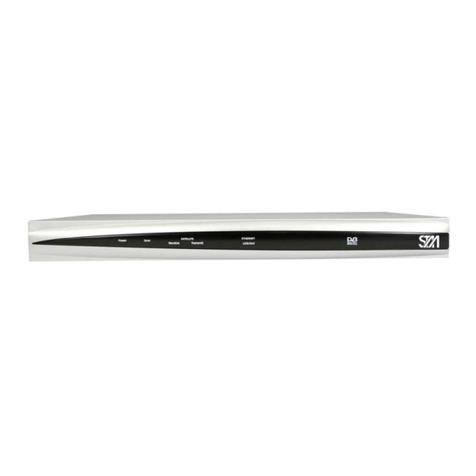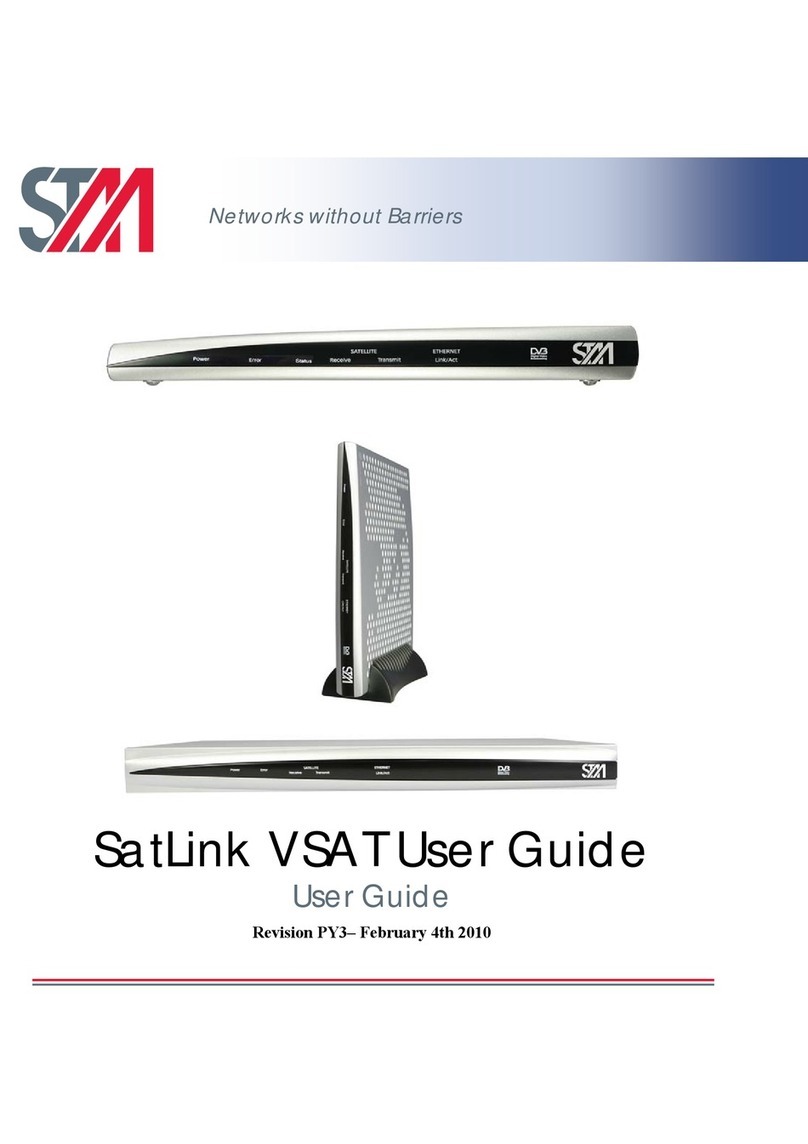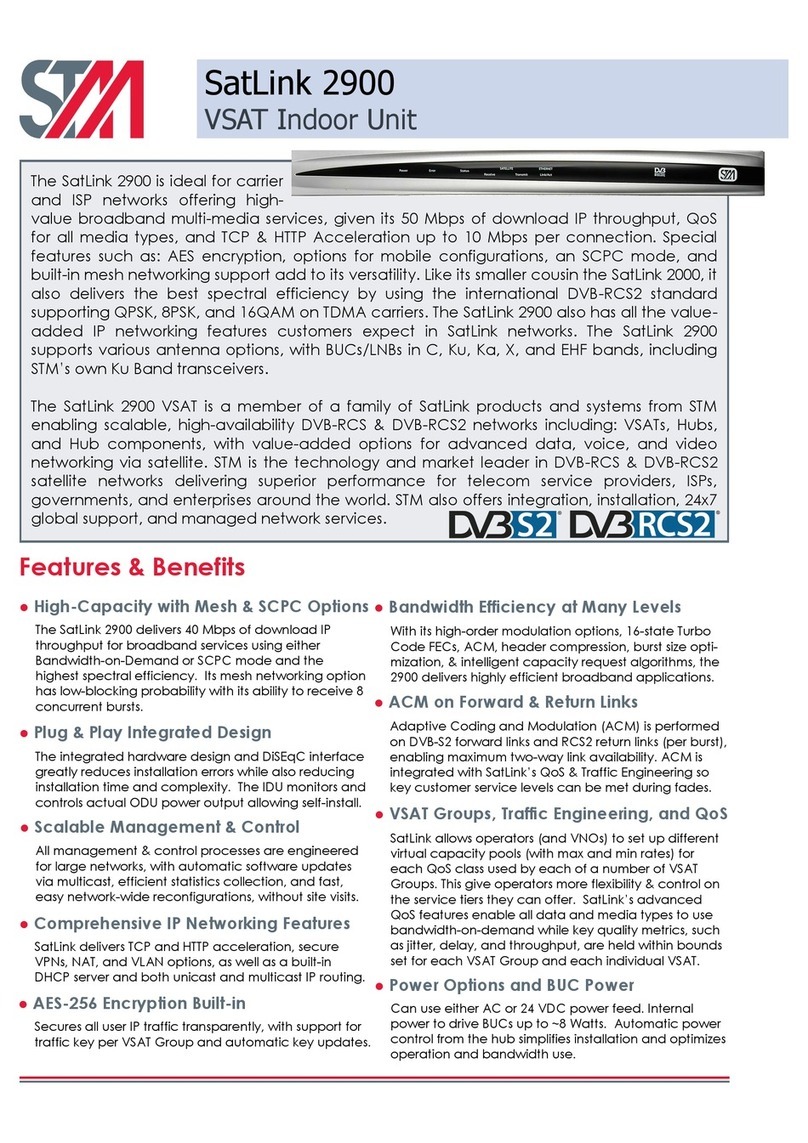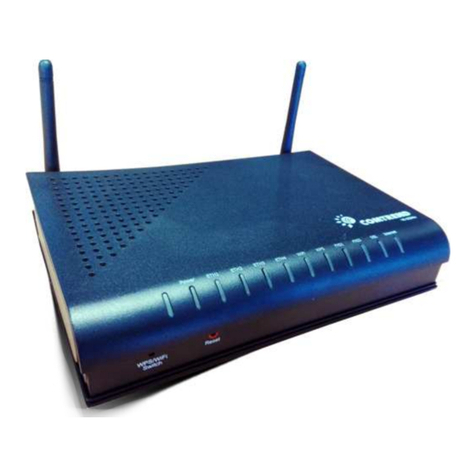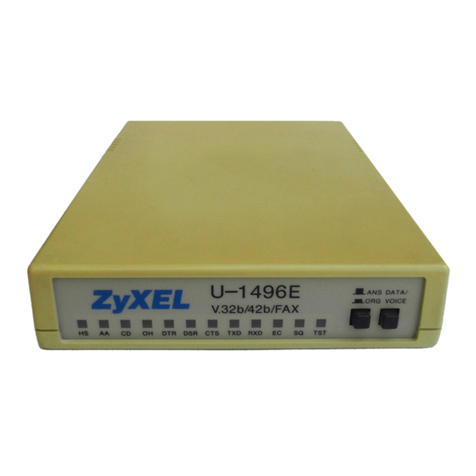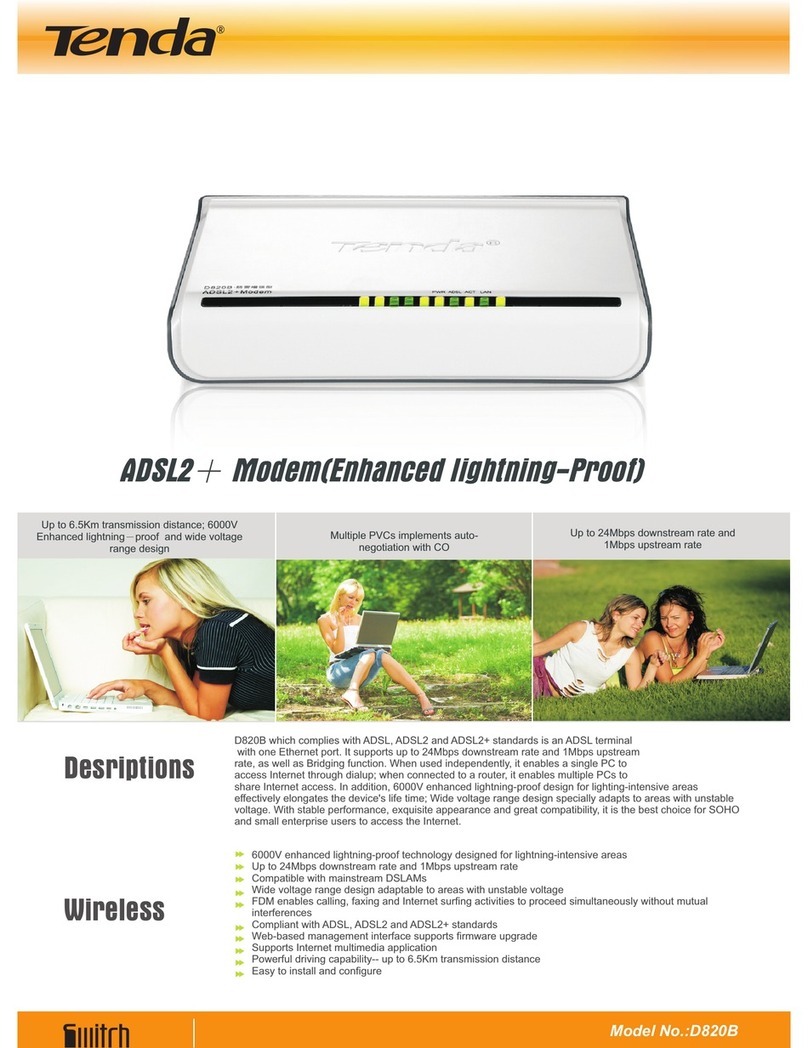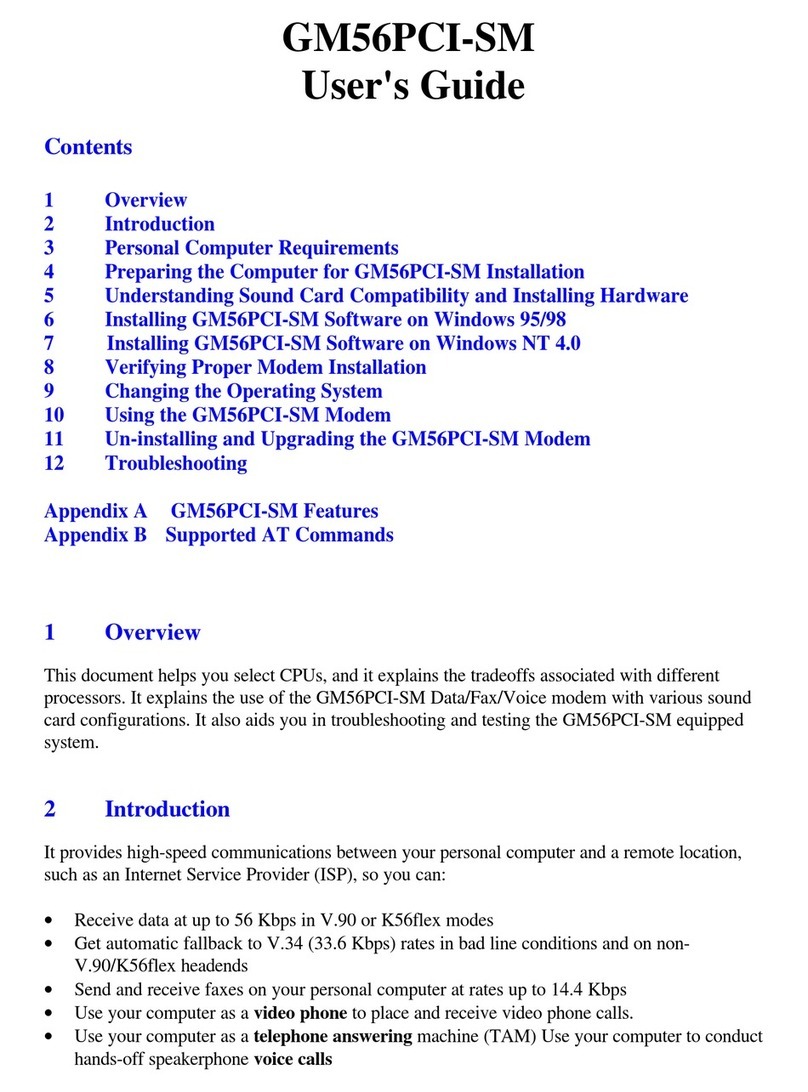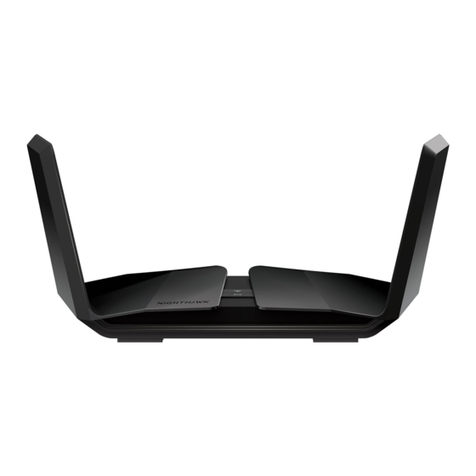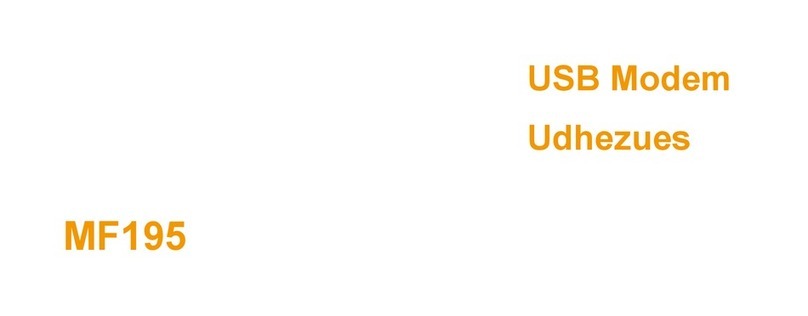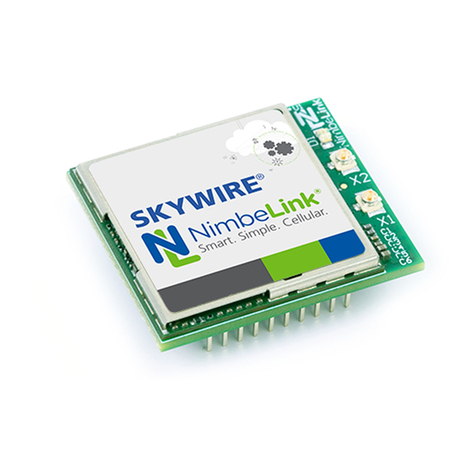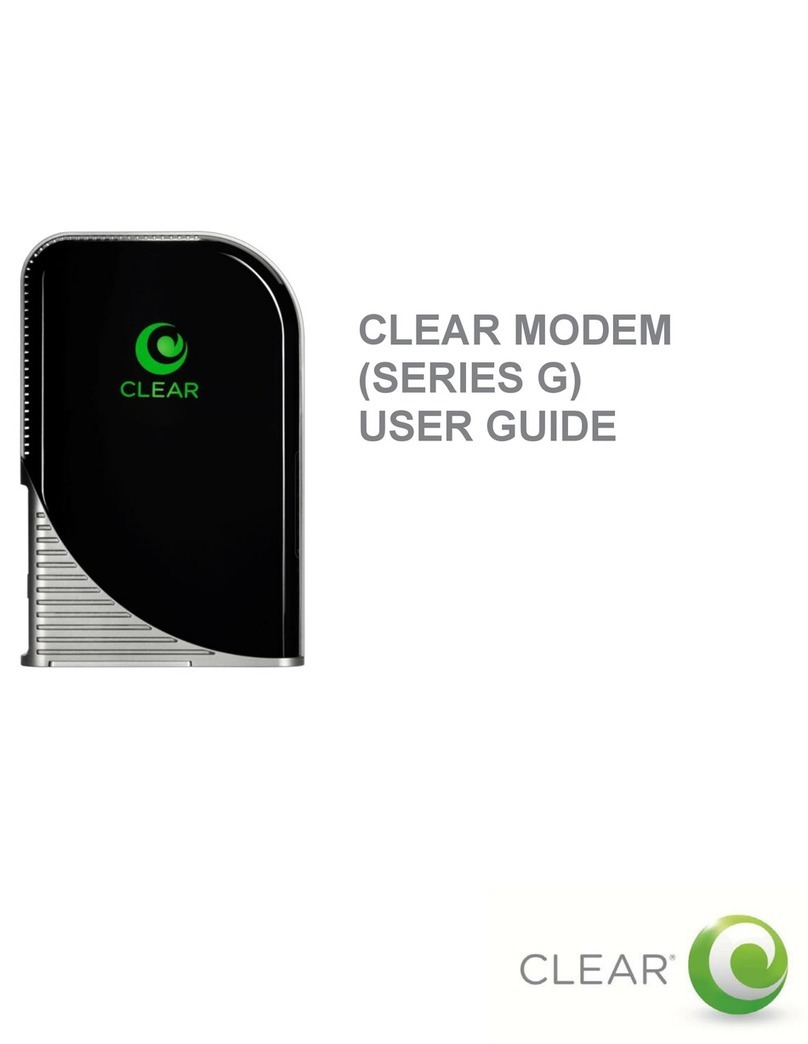STM SatLink 2900 Mobile User manual

The SatLink 2900 Mobile VSAT provides the
advanced capabilities required for land, sea, and
aerospace deployments, including global roaming
with access to 10 different beams for continuous
two-way satellite communications. Internet access,
Voice over IP, GSM over IP, and video conferencing
are common applications of its powerful mobile
features.
The SatLink 2900 VSAT is a member of a family of
SatLink products and systems from STM enabling scalable, high-availability DVB-RCS &
DVB-RCS2 networks including: VSATs, Hubs, and Hub components, with value-added options
for advanced data, voice, and video networking via satellite. STM is the technology and
market leader in DVB-RCS & DVB-RCS2 satellite networks delivering superior performance for
telecom service providers, ISPs, governments, and enterprises around the world. STM also
offers integration, installation, 24x7 global support, and
managed network services.
SatLink 2900 Mobile
Broadband Mobile VSAT Indoor Unit
The SatLink 2900 delivers 50 Mbps of download IP
throughput for broadband services using either Band-
width-on-Demand or SCPC mode and the highest
spectral efficiency. Its mesh networking option has low
-blocking probability with its ability to receive 8 concur-
rent bursts.
●High-Capacity with Mesh & SCPC Options
Features & Benefits
Can use either AC or 24 VDC power feed. Internal
power to drive BUCs up to ~8 Watts. Automatic power
control from the hub simplifies installation and optimizes
operation and bandwidth use.
●Power Options and BUC Power
Secures all user IP traffic transparently, with support for
traffic key per VSAT Group and automatic key updates.
●AES-256 Encryption Built-in
SatLink delivers TCP and HTTP acceleration, secure
VPNs, NAT, and VLAN options, as well as a built-in
DHCP server and both unicast and multicast IP routing.
●Comprehensive IP Networking Features
All management & control processes are engineered
for large networks, with automatic software updates
via multicast, efficient statistics collection, and fast,
easy network-wide reconfigurations, without site visits.
●Scalable Management & Control
●VSAT Groups, Traffic Engineering, and QoS
●ACM on Forward & Return Links
●Bandwidth Efficiency at Many Levels
With its high-order modulation options, 16-state Turbo
Code FECs, ACM, header compression, burst size opti-
mization, & intelligent capacity request algorithms, the
2900 delivers highly efficient broadband applications.
SatLink allows operators (and VNOs) to set up different
virtual capacity pools (with max and min rates) for
each QoS class used by each of a number of VSAT
Groups. This give operators more flexibility & control on
the service tiers they can offer. SatLink’s advanced
QoS features enable all data and media types to use
bandwidth-on-demand while key quality metrics, such
as jitter, delay, and throughput, are held within bounds
set for each VSAT Group and each individual VSAT.
Adaptive Coding and Modulation (ACM) is performed
on DVB-S2 forward links and RCS2 return links (per burst),
enabling maximum two-way link availability. ACM is
integrated with SatLink’s QoS & Traffic Engineering so
key customer service levels can be met during fades.
The SatLink 2900 Mobile VSAT can store parameters for
up to 20 Forward Links, enabling it to move seamlessly
between beams. The software is specially adapted for
the constant roll and pitch of the seas making it less
susceptible to outages, and the unit is equipped with a
GPS interface for fast, automatic logon and synchroni-
zation. Optional transmit inhibit switch prevents inad-
vertent transmissions outside of authorized areas. Mesh
networking option available for direct communications
between mobile installations.
●Adapted to Mobile Environment
Software for automatic beam switching is included for
interfacing with leading maritime & land mobile
antennas via IP.
●Automatic Beam Switching

SatLink 2900 Mobile
Broadband Mobile VSAT Indoor Unit
Specifications
www.stmi.com
STM Group, Inc. |2 Faraday |Irvine, CA 92618, USA |T +1 949 273 6800 |FAX +1 949 273 6020
STM Norway AS |Vollsveien 21 | 1366 Lysaker, Norway |T +47 6753 5337 |FAX +47 6753 5335
All specifications and features subject to change without notice. SatLink and the STM logo are registered trademarks of STM Group, Inc.
The DVB logo is a registered trademark of the DVB Project (www.DVB.org). DiSEqC is a trademark of Eutelsat.
Document #200452; Revision O - 130708 © 2013
Throughput: Download: Up to 50 Mbps of IP packets;
Upload: Up to 5,000 packets per second
(varies with IP software features enabled)
Capacity
Physical Interfaces
Serial Port: RS-232, DB-9 (local management)
Ethernets: Two at 10/100/1000 Mbps, RJ-45
Tx (BUC) Interface: F-type 75 Ohm; 24 VDC at up to 4A,
and 10 MHz reference under software control
Tx Output: 950 to 1700 MHz ; - 35 dBm to +10 dBm
BUC control: Extended DiSEqC TM 2.0
Rx (LNB) Interface: F-type 75 Ohm; 13/18 VDC at up to 0.5A
Rx Input: 950 to 2150 MHz; -65 dBm to –25 dBm
LNB Control: 22 KHz DiSEqC 2.0
Mobile Interface: RJ-45; Tx Inhibit Switch, NMEA-0183 GPS
Input, Rx Lock Signal
Front LEDs: Power, Error, Status, Tx, Rx, Ethernet Link
Power: AC or 24VDC (19-36 VDC)
Electrical, Environmental & Physical
Power Supply: 100-240 VAC, 50-60 Hz, internal
Power Consumption: 17 W (IDU only)
Operating Temperature: -20 to 55 °C
Storage Temperature: -35 to 85 °C
Humidity: 20% to 90% non-condensing
Size: 44 x 24.5 x 4.45 cm (1U for standard rack)
Weight: 4 kg
Traffic Classification: Multi-Field Classifiers using DSCP,
Protocol Type, IP Source Address, IP Destination Ad-
dress, TCP/UDP Source or Destination Port; or 802.1p
Tx Queues: 7 priority queues per link and discard group
QoS: Four QoS Classes for Bandwidth-on-Demand:
Voice (VoIP), Video Conferencing (ViC), Critical Data
(CD), and Best Effort (BE)
Capacity Requests: Rate-based, Volume-based and
Combined modes (plus quasi-dynamic CRA options)
IP QoS and Bandwidth-on-Demand
IP Routing and IP Stack Support
Routing: Unicast and Multicast IP
Protocols: IPv4, IPv6*, UDP, TCP, ARP, ICMP, IGMPv2,
DHCP Server, DNS Cache, Ping, Telnet, SNMPv2c
Advanced Options: TCP & HTTP Acceleration up to 10
Mbps per session, NAT, GRE VPN Tunnels, VLANs
Management Interfaces
Local: RS-232 CLI
Remote: Telnet, SNMP v2c, Web GUI
Software Upgrade: Local, TFTP or multicast via satellite
Compliance
CE: Fully compliant with R&TTE Directive
DVB-RCS2: ETSI EN 301 545-2
DVB-RCS: ETSI EN 301 790; SatLabs
DVB-S/S2: ETSI EN 300 421 / ETSI EN 302 307
International: Country specific certifications
* anticipated for later SW release
TDM Receive (DVB-S2)
Symbol Rates: 1 to 45 Msps
MODCODs: (LDPC + BCH)
QPSK: 1/4, 1/3, 2/5, 1/2, 3/5, 2/3, 3/4, 4/5, 5/6, 8/9, 9/10
8PSK: 3/5, 2/3, 3/4, 5/6, 8/9, 9/10
16APSK: 2/3, 3/4, 4/5, 5/6, 8/9, 9/10
FEC Frames: Normal (64 Kbit) and Short (16 Kbit)
Roll-off Factor: 20%, 25%, or 35%
Modes: ACM, VCM, CCM
IP Encapsulation: GSE or MPE/MPEG-TS
TDMA Transmit & Receive; SCPC Option
Symbol Rates (RTN):
125 ksps to 8 Msps (RCS2)
125 ksps to 4 Msps (RCS)
Symbol Rates (Mesh): 200 ksps to 3 Msps
MODCODs: (Turbo Codes FEC 8-state and 16-state)
QPSK: 1/2, 2/3, 3/4, 4/5, 6/7 (DVB-RCS)
QPSK: 1/3, 1/2, 2/3, 3/4, 5/6 (DVB-RCS2)
8PSK: 2/3, 3/4, 6/7 (DVB-RCS extension)
8PSK: 2/3, 3/4, 5/6 (DVB-RCS2)
16QAM: 3/4, 5/6 (DVB-RCS2)
Adaptivity: ACM with ACS (RCS2), ACS (RCS)
(ACS = Adaptive Carrier Selection)
Mesh Rx: 8simultaneous bursts, 44 MHz (RCS QPSK only)
IP Encapsulation: RLE (RCS2) or MPE/MPEG-TS (RCS)
SCPC Burst Mode: Dedicated carrier for Tx with full Constant
Rate Access (CRA), no capacity requests required
Compression & Encryption
RTP/UDP/IP headers: removes 38 bytes
UDP/IP headers: removes 14 bytes
MPE header (if used): removes 9 bytes on Tx (7 bytes on Rx)
TRANSEC: AES-256 encryption on Layer 2
Table of contents
Other STM Modem manuals
